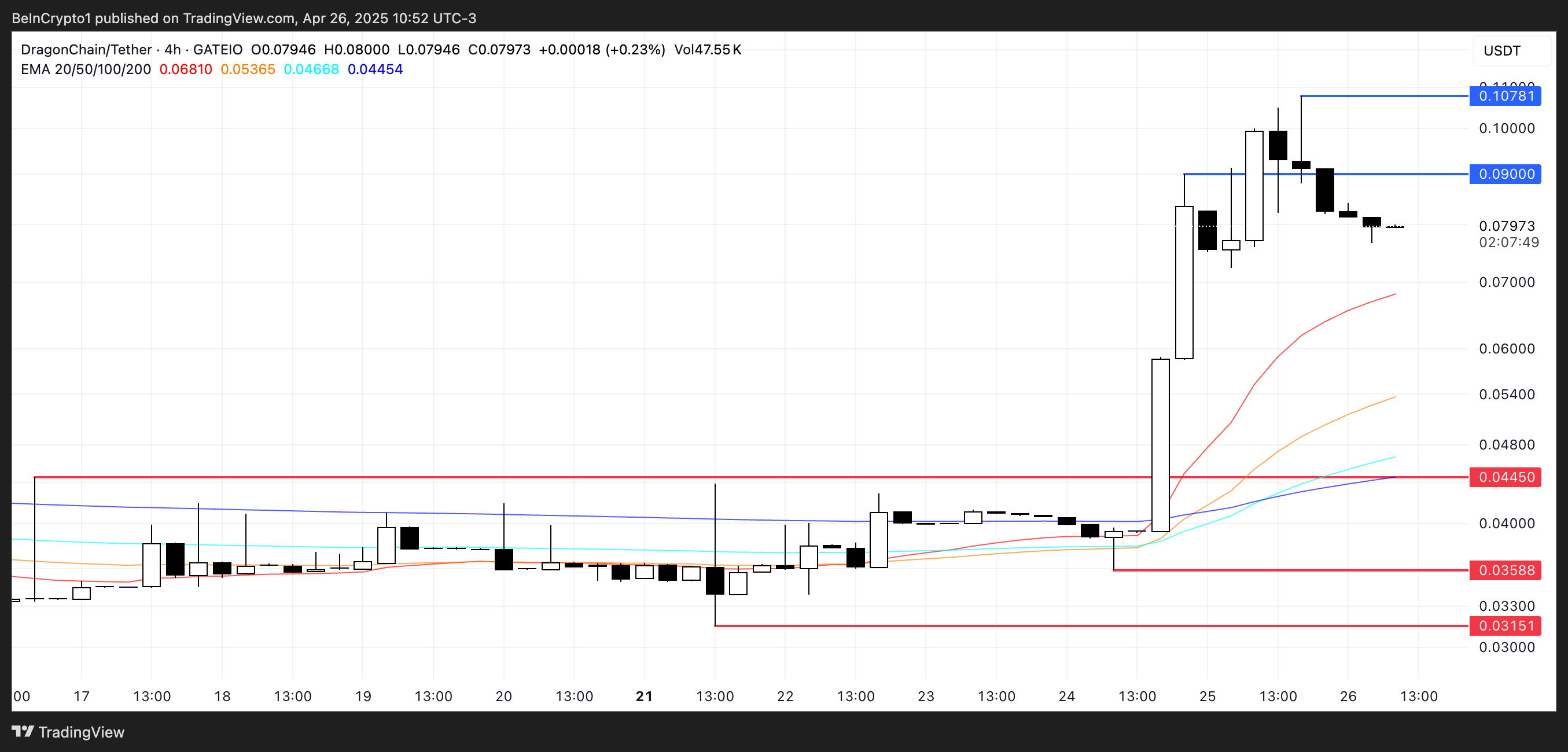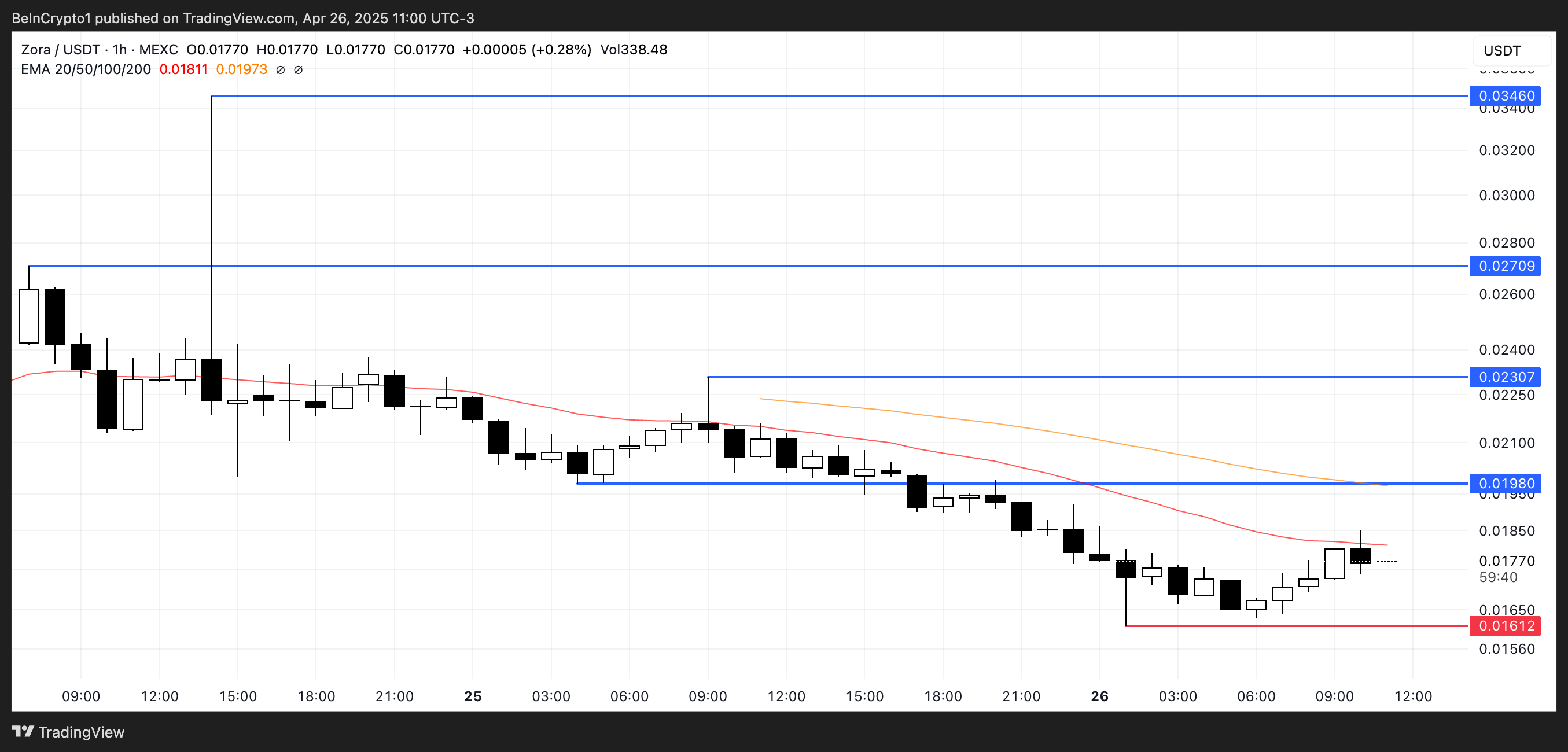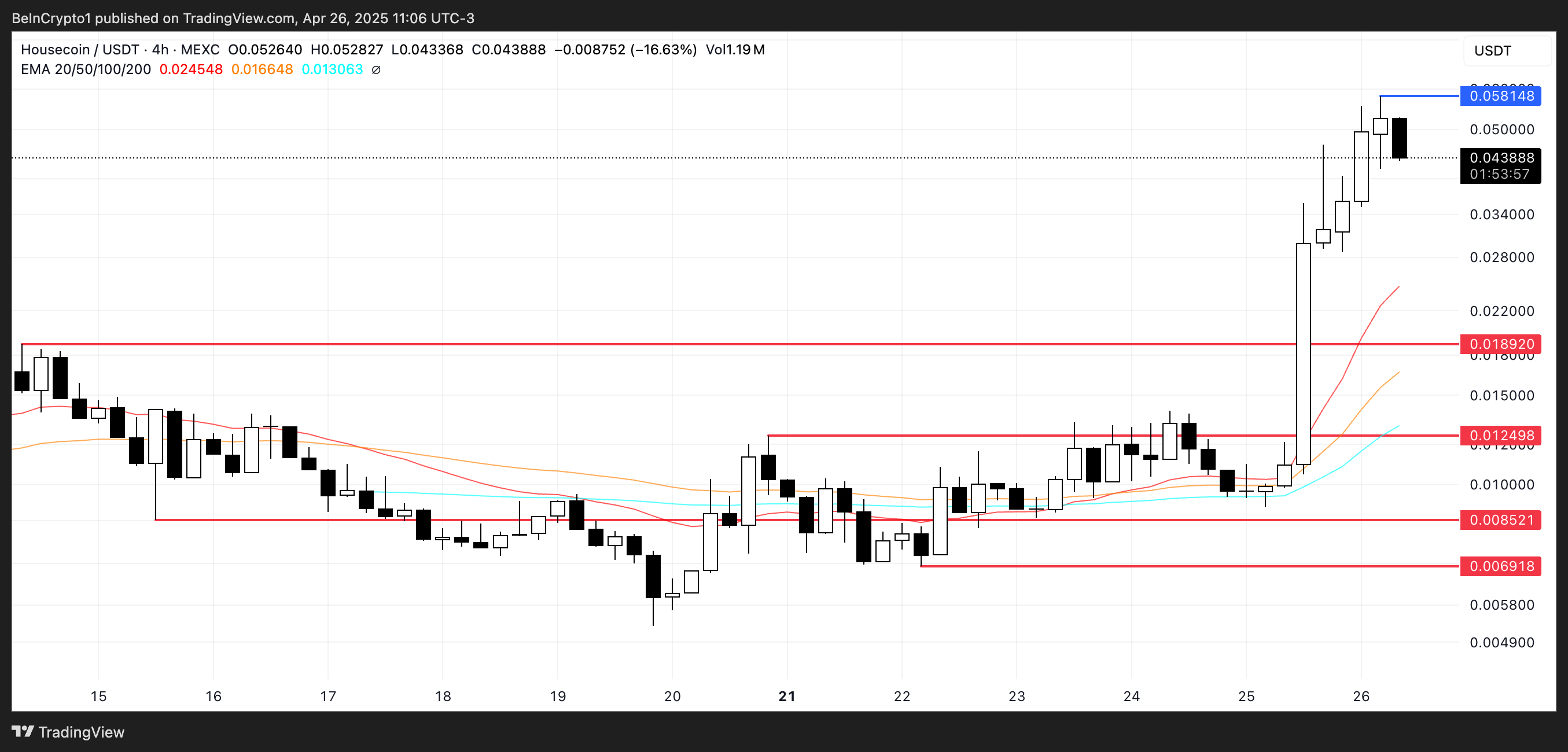Low Market Cap Tokens are gaining momentum as May 2025 begins, with Dragonchain (DRGN), ZORA, and Housecoin (HOUSE) leading the way. DRGN surged 115% after the SEC dropped its lawsuit, reigniting interest in the project.
ZORA gained traction after its Coinbase listing, riding the viral Content Coins trend. Meanwhile, HOUSE exploded over 250% in 24 hours.
Dragonchain (DRGN)
Dragonchain (DRGN) is a hybrid blockchain platform built for businesses, enterprises, and developers. It was originally developed inside The Walt Disney Company in 2014.
After becoming independent, the project launched the DRGN token, which briefly hit a $1.3 billion market cap in early 2018. However, a SEC lawsuit in 2022 saw the token’s market cap fall below $20 million.
Earlier this week, DRGN surged 115% after the SEC officially dropped its 2022 lawsuit.

If momentum holds, DRGN could soon test resistance at $0.090 and $0.107, possibly breaking above $0.11 for the first time since 2021.
However, DRGN may correct back toward $0.044 if buying pressure weakens.
A deeper drop could push the token toward $0.035 or even $0.031. For now, optimism has returned to one of the earliest enterprise blockchain platforms.
ZORA
ZORA is the native token of the Zora platform, a marketplace built around tokenizing digital content. It launched on April 23 through an airdrop and was immediately listed on several major exchanges, including Binance Alpha, Bybit, and KuCoin.
ZORA gained even more momentum after Coinbase officially listed it with an “Experimental” label, warning users about potential volatility. With a market cap close to $46 million, it’s currently one of the most interesting Low-Market-Cap Tokens to watch.
The platform is based on Base chain, Coinbase’s Layer-2 network, and supports the rising “Content Coins” trend — where users mint digital content like memes, images, and posts as tradable tokens.

ZORA recently tested and held support at $0.016, showing resilience after its volatile launch. If the uptrend continues, the token could test resistance at $0.0198, potentially moving toward $0.023 and $0.027.
ZORA could climb further to challenge the $0.034 mark if the broader Content Coins narrative gains traction. It remains one of the early leaders in this emerging sector.
Housecoin (HOUSE)
Housecoin is a new Solana token launched on Pumpfun, built around the idea of letting users “hedge against the housing market.” It has quickly gained attention, reaching a market cap of around $48 million.
HOUSE recently crossed above $0.050 for the first time, setting a new all-time high.

Over the last 24 hours alone, the token has surged by more than 250%, highlighting the growing hype around new meme and niche sector tokens on Solana.
If the strong momentum continues, HOUSE could soon test resistance around $0.058, and a breakout could push it above $0.060 and even $0.070 for the first time.
However, if the trend reverses, HOUSE could return toward support at $0.0189. If that level fails to hold, deeper drops toward $0.0124, $0.008, and even $0.0069 could follow.
The post Top 3 Low Market Cap Tokens to Watch in May 2025 appeared first on BeInCrypto.








